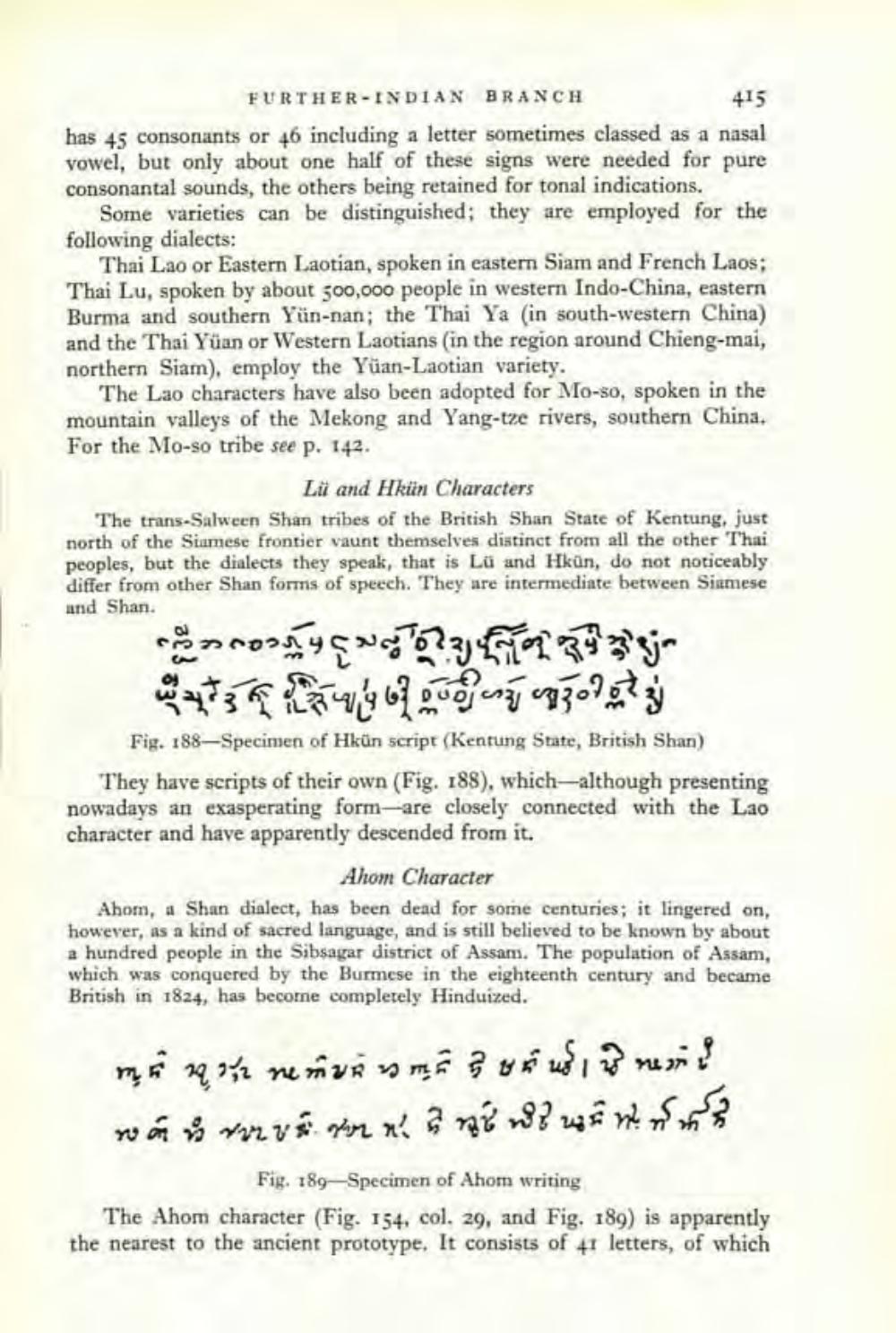________________
FURTHER-INDIAN
BRANCH
415
has 45 consonants or 46 including a letter sometimes classed as a nasal vowel, but only about one half of these signs were needed for pure consonantal sounds, the others being retained for tonal indications.
Some varieties can be distinguished; they are employed for the following dialects:
Thai Lao or Eastern Laotian, spoken in eastern Siam and French Laos; Thai Lu, spoken by about 500,000 people in western Indo-China, eastern Burma and southern Yün-nan; the Thai Ya (in south-western China) and the Thai Yuan or Western Laotians (in the region around Chieng-mai, northern Siam), employ the Yuan-Laotian variety.
The Lao characters have also been adopted for Mo-so, spoken in the mountain valleys of the Mekong and Yang-tze rivers, southern China. For the Mo-so tribe see p. 142.
Lu and Hkün Characters
The trans-Salween Shan tribes of the British Shan State of Kentung, just north of the Siamese frontier vaunt themselves distinct from all the other Thai peoples, but the dialects they speak, that is Lü and Hkün, do not noticeably differ from other Shan forms of speech. They are intermediate between Siamese and Shan.
CONCENTR
ཡཾསཱ ཚཱ ཉྙོ ཨཱ ུ པརི དམིཾཨ པཨ༢༠'ཊྛིཏྟཊྛཾདཾ
Fig. 188-Specimen of Hkün script (Kentung State, British Shan)
They have scripts of their own (Fig. 188), which-although presenting nowadays an exasperating form-are closely connected with the Lao character and have apparently descended from it.
Ahom Character
Ahom, a Shan dialect, has been dead for some centuries; it lingered on, however, as a kind of sacred language, and is still believed to be known by about a hundred people in the Sibsagar district of Assam. The population of Assam, which was conquered by the Burmese in the eighteenth century and became British in 1824, has become completely Hinduized.
meme, and
1932
wat ver vs. vor 2 183 we
Fig. 189-Specimen of Ahom writing
The Ahom character (Fig. 154, col. 29, and Fig. 189) is apparently the nearest to the ancient prototype. It consists of 41 letters, of which




